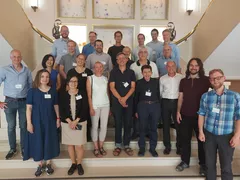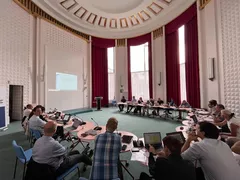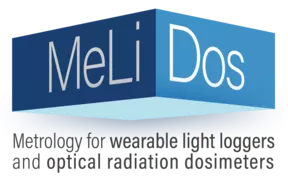Light sources have a significant impact on people's health and well-being. Specific process techniques and measuring instruments are needed to evaluate such data to determine how much daylight people need and usually receive.
Prof. Dr. Manuel Spitschan, head of the Assistant Professorship of Chronobiology & Health, is a new expert responsible for a consortium funded by the European Partnership on Metrology, which works on portable light measurement devices and their application. TUM is receiving more than 200,000 euros in funding for the project as part of the European Union's EURAMET program.
The interdisciplinary project was launched on Monday, 19 June 2023, at a kickoff meeting in Paris at the Laboratoire national de métrologie et d'essais. "Within the project, many expert groups such as metrology institutes, federal institutes, or even universities like TUM are involved. We want to find out how much light people get every day - and our unit is particularly concerned with how to use light meters in the best possible way and analyze their data," explains Spitschan.
This is currently the focus of the consortium's "Work Package 2", chaired and coordinated by Prof. Spitschan. There is currently a lot of interest in light meters. However, it is still quite variable how they are calibrated and validated: "Ultimately, our project is about creating quality assurance and highlighting what data is relevant and helpful. We want to define best practice guides to provide guidelines for action in this area," says Spitschan, describing the approach to the project. In addition, the work package being carried out at TUM also involves the development of software, tools and metadata transcriptors.
This means that individual target groups can be aimed at for future research, as the usability of the devices also depends on precisely those groups of people. "Vulnerable groups in particular, such as older people, have light exposures for which there is still room for optimization. But even for healthy working people who work during the day, light can already have an important, even major influence," explains the neuroscientist and psychologist.
Many scientific overlaps can also be found in Spitschan's involvement with the International Commission on Illumination (Commission Internationale de l'Éclairage - CIE). There, the expert on circadian rhythms heads a committee on the topic of "wearables for light measurement" (more under this link).
To the homepage of the Assistant Professorship of Chronobiology & Health
To the project website
Contact:
Prof. Dr. Manuel Spitschan
Assistant Professorship of Chronobiology & Health
Georg-Brauchle-Ring 60/62
80992 München
phone: 089 289 24544
e-mail: manuel.spitschan(at)tum.de
Text: Bastian Daneyko
Photos: Metrology for wearable light loggers and optical rediation dosimeters/private



